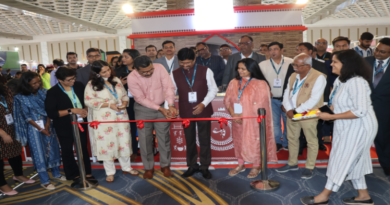Government’s Vision for Vishnupad and Mahabodhi Temple Corridors

New Delhi: Union Finance Minister Nirmala Sitharaman, in her Union Budget 2024-25 speech, announced comprehensive development plans for the Vishnupad Temple corridor at Gaya and the Mahabodhi Temple at Bodh Gaya in Bihar. The initiative aims to transform these sacred sites into world-class pilgrim and tourist destinations, modeled on the successful Kashi Vishwanath Temple Corridor. The Vishnupad Temple, located next to the Falgu River, and the Mahabodhi Temple, a UNESCO World Heritage Site, hold immense spiritual significance.
Sitharaman emphasized the importance of tourism in India’s civilization, highlighting its potential to create jobs, stimulate investments, and unlock economic opportunities across sectors. The development of Rajgir and Nalanda in Bihar was also announced, with Rajgir being significant for Hindus, Buddhists, and Jains, and home to the ancient Munisuvrat temple and the sacred Saptarishi hot springs. Nalanda, another UNESCO World Heritage Site, will see efforts to revive its ancient university to its former glory.
Additionally, the government will assist in developing Odisha’s rich tourism assets, including its scenic beauty, temples, monuments, wildlife sanctuaries, and beaches. These announcements coincide with the 46th session of the World Heritage Committee in New Delhi, inaugurated by Prime Minister Narendra Modi.
The finance minister also outlined the “Purvodaya” plan for the all-round development of eastern India, encompassing Bihar, Jharkhand, West Bengal, Odisha, and Andhra Pradesh. This initiative will focus on human resource development, infrastructure, and economic opportunities to make the region a growth engine for a “Viksit Bharat”.
Furthermore, the development of an industrial node at Gaya as part of the Amritsar-Kolkata Industrial Corridor will catalyze industrial growth in the eastern region. This model aims to blend cultural heritage with economic development, embodying the vision of “Vikas bhi, Virasat bhi”. Sitharaman concluded by reiterating the government’s commitment to a roadmap for a developed India, focusing on nine priorities: productivity and resilience in agriculture, employment and skilling, inclusive human resource development, manufacturing and services, urban development, energy security, infrastructure, innovation, and next-generation reforms.
FOLLOW FOR MORE.







I was just looking for this info for a while. After 6 hours of continuous Googleing, finally I got it in your website. I wonder what’s the lack of Google strategy that don’t rank this kind of informative web sites in top of the list. Generally the top websites are full of garbage.
https://www.telqq.com Telegram群组,Telegram群组导航。收录Telegram上的优质频道和群组,打造一个高质量Telegram导航。TGNAV收录整理了Telegram上的许多优质频道、群组、机器人,帮助用户发现更多优质的群组。
I believe this web site has some real excellent information for everyone :D. “The test of every religious, political, or educational system is the man that it forms.” by Henri Frdric Amiel.
在这里下载Telegram官网最新版,适用于所有主流操作系统。本站为你提供详细的纸飞机使用指南,包括如何下载、安装以及设置中文界面,帮助你轻松使用这一全球领先的通讯 https://www.telegrambbs.com
https://www.tellern.com Telegram应用是开源的,Telegram下载的程序支持可重现的构建。Telegram同时适用于以下环境:Android安卓端,iPhone 和 iPad及MacOS的Apple端,Windows/Mac/Linux桌面版
I am glad to be one of many visitants on this outstanding site (:, thanks for putting up.
Hello my friend! I wish to say that this post is awesome, great written and come with approximately all vital infos. I would like to see extra posts like this .